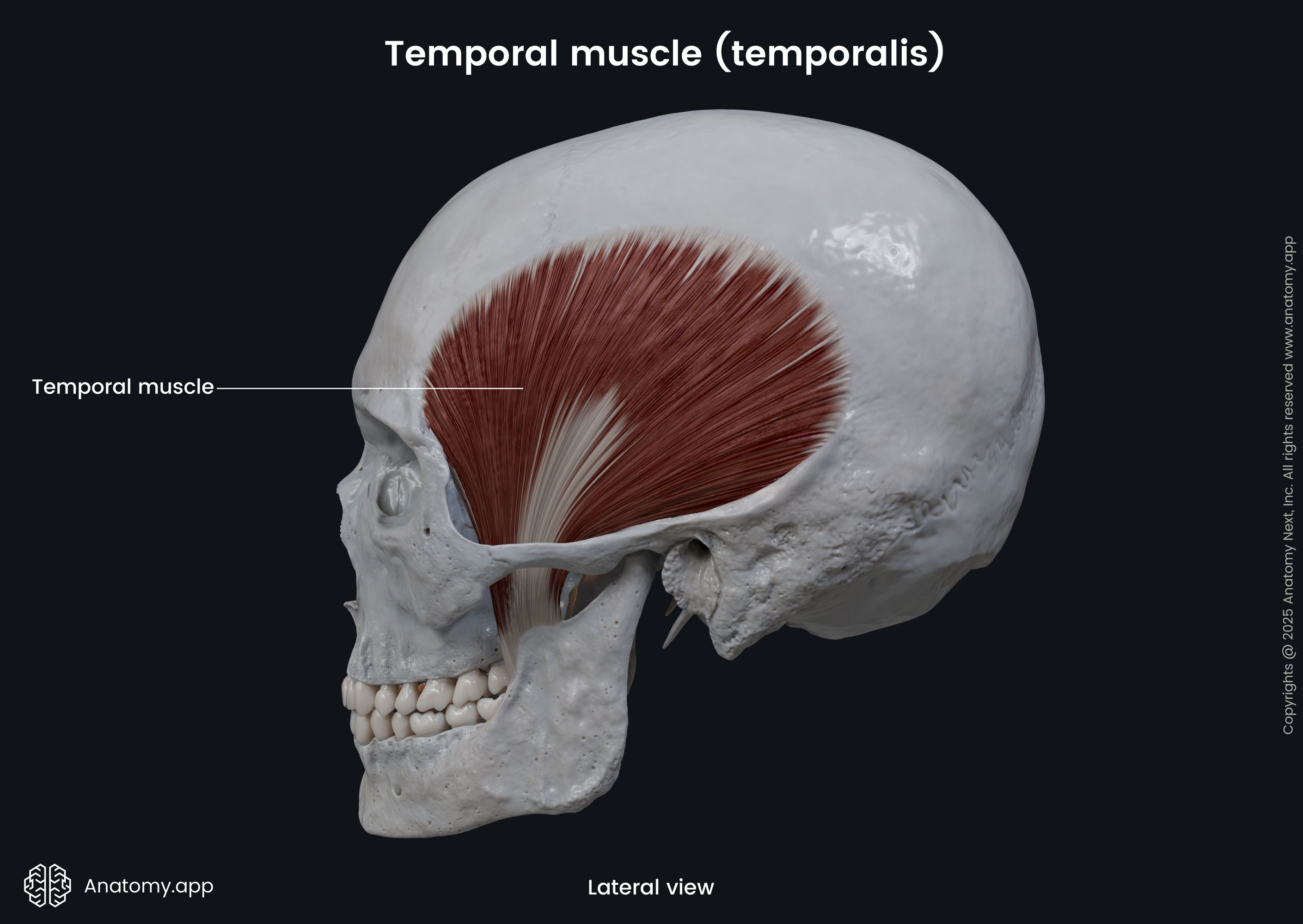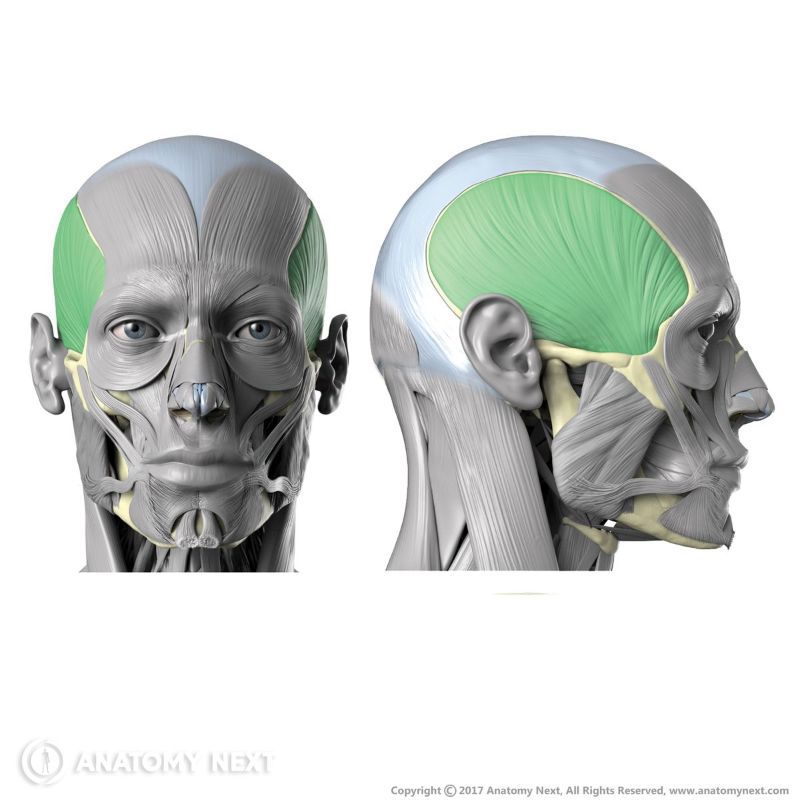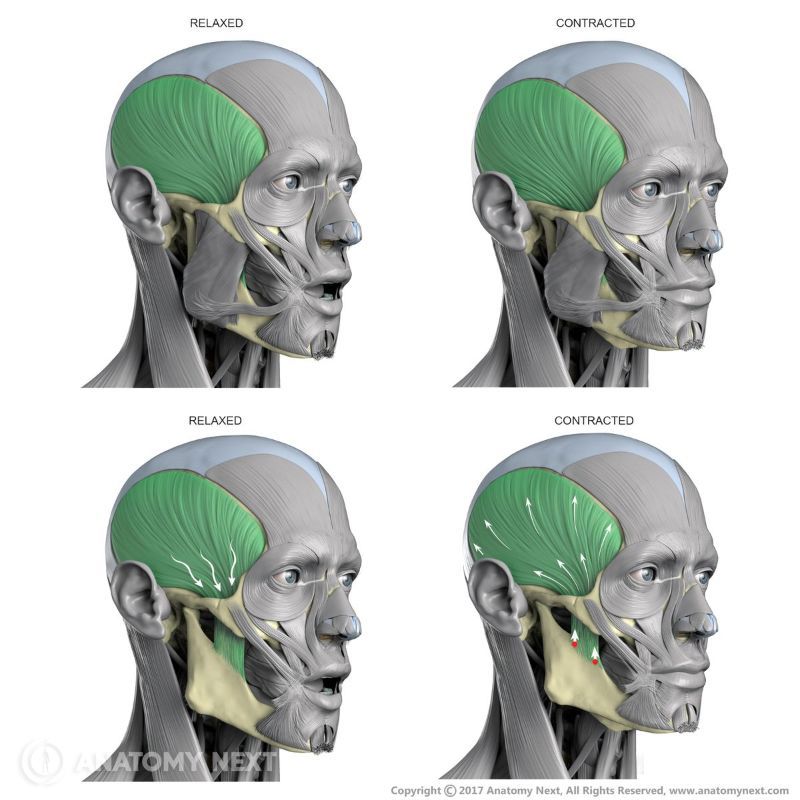- Anatomical terminology
- Skeletal system
- Joints
- Muscles
- Head muscles
- Neck muscles
- Muscles of upper limb
- Thoracic muscles
- Muscles of back
- Muscles of lower limb
- Heart
- Blood vessels
- Lymphatic system
- Nervous system
- Respiratory system
- Digestive system
- Urinary system
- Female reproductive system
- Male reproductive system
- Endocrine glands
- Eye
- Ear
Temporalis (temporal muscle)
The temporalis (Latin: musculus temporalis) is a wide, fan-shaped muscle located on each side of the skull. This muscle covers most of the temporal bone and fills the temporal fossa. The temporalis is one of the primary muscles of mastication involved in the elevation and retraction of the lower jaw. This muscle is covered by the temporal fascia.

| Temporalis | |
| Origin | Temporal plane, temporal fascia |
| Insertion | Coronoid process of mandible |
| Action | Elevates mandible, retracts mandible (posterior fibers) |
| Innervation | Deep temporal nerve of mandibular nerve (CN V3) |
| Blood supply | Deep temporal branches of maxillary artery, middle temporal branches of superficial temporal artery |


Origin
The temporalis muscle originates from the temporal plane below the superior temporal line of the parietal bone and the deep surface of the temporal fascia.

Insertion
The temporalis forms a tendon that inserts onto the coronoid process of the mandible.
Action
Upon activation, the temporalis muscle elevates the mandible. It also can retract the mandible by pulling it backward with its posterior fibers.

Innervation
The temporalis is innervated by the deep temporal nerve, a branch of the mandibular division of the trigeminal nerve (CN V3).
Blood supply
The temporalis is provided with the arterial blood by the deep temporal branches of the maxillary artery and middle temporal branches of the superficial temporal artery.